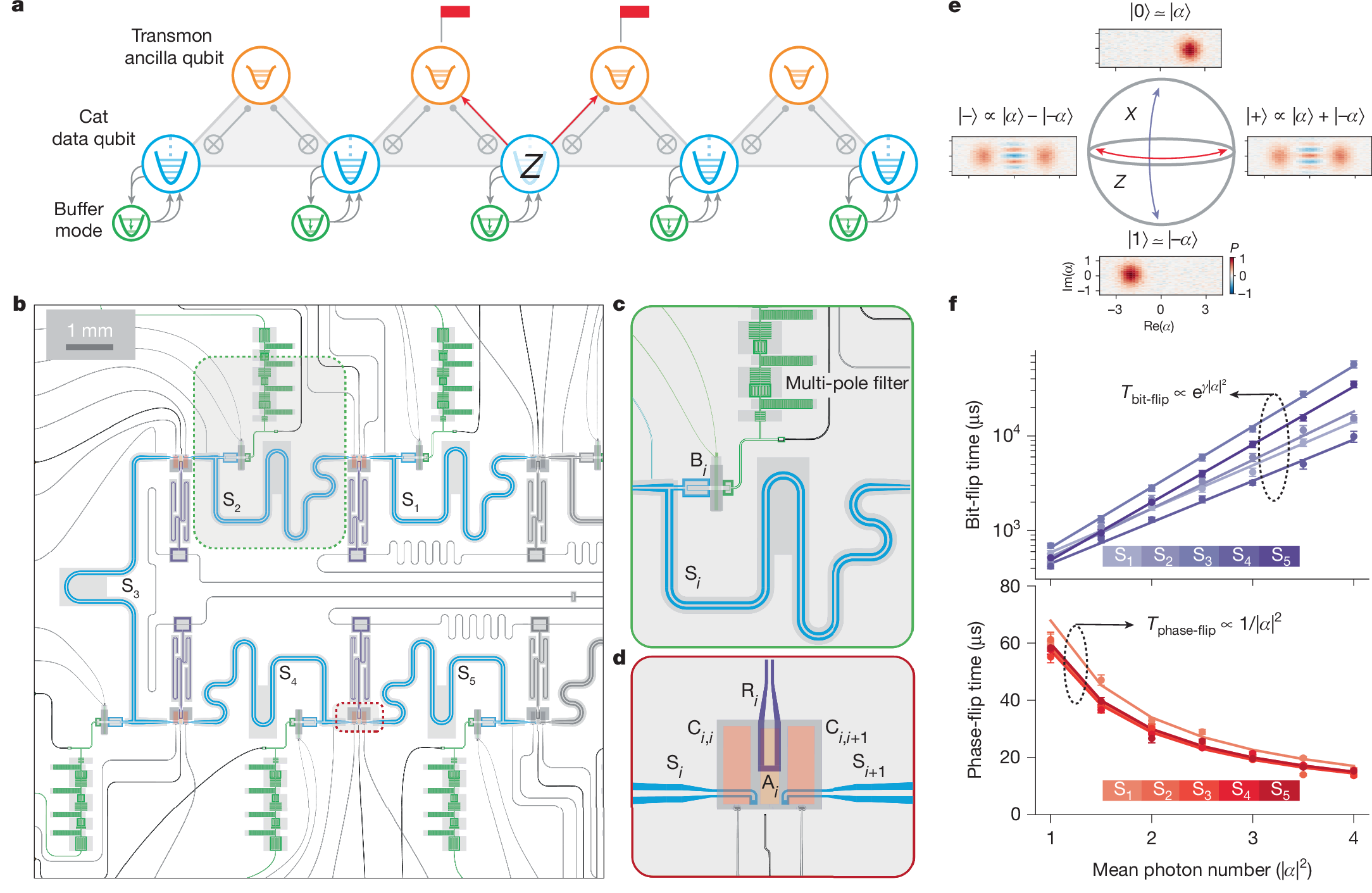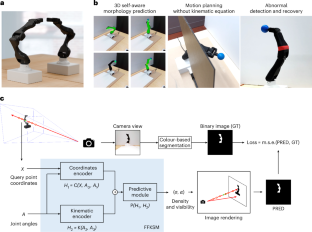2025-02-27 カリフォルニア工科大学 (Caltech)
<関連情報>
- https://www.caltech.edu/about/news/new-ocelot-chip-makes-strides-in-quantum-computing
- https://www.nature.com/articles/s41586-025-08642-7
連結されたボソニック量子ビットによるハードウェア効率の良い量子エラー訂正 Hardware-efficient quantum error correction via concatenated bosonic qubits
Harald Putterman,Kyungjoo Noh,Connor T. Hann,Gregory S. MacCabe,Shahriar Aghaeimeibodi,Rishi N. Patel,Menyoung Lee,William M. Jones,Hesam Moradinejad,Roberto Rodriguez,Neha Mahuli,Jefferson Rose,John Clai Owens,Harry Levine,Emma Rosenfeld,Philip Reinhold,Lorenzo Moncelsi,Joshua Ari Alcid,Nasser Alidoust,Patricio Arrangoiz-Arriola,James Barnett,Przemyslaw Bienias,Hugh A. Carson,Cliff Chen,… Oskar Painter
Nature Published:26 February 2025
DOI:https://doi.org/10.1038/s41586-025-08642-7

Abstract
To solve problems of practical importance, quantum computers probably need to incorporate quantum error correction, in which a logical qubit is redundantly encoded in many noisy physical qubits. The large physical-qubit overhead associated with error correction motivates the search for more hardware-efficient approaches. Here, using a superconducting quantum circuit, we realize a logical qubit memory formed from the concatenation of encoded bosonic cat qubits with an outer repetition code of distance d = 5 (ref. 10). A stabilizing circuit passively protects cat qubits against bit flips. The repetition code, using ancilla transmons for syndrome measurement, corrects cat qubit phase flips. We study the performance and scaling of the logical qubit memory, finding that the phase-flip correcting repetition code operates below the threshold. The logical bit-flip error is suppressed with increasing cat qubit mean photon number, enabled by our realization of a cat-transmon noise-biased CX gate. The minimum measured logical error per cycle is on average 1.75(2)% for the distance-3 code sections, and 1.65(3)% for the distance-5 code. Despite the increased number of fault locations of the distance-5 code, the high degree of noise bias preserved during error correction enables comparable performance. These results, where the intrinsic error suppression of the bosonic encodings enables us to use a hardware-efficient outer error-correcting code, indicate that concatenated bosonic codes can be a compelling model for reaching fault-tolerant quantum computation.



